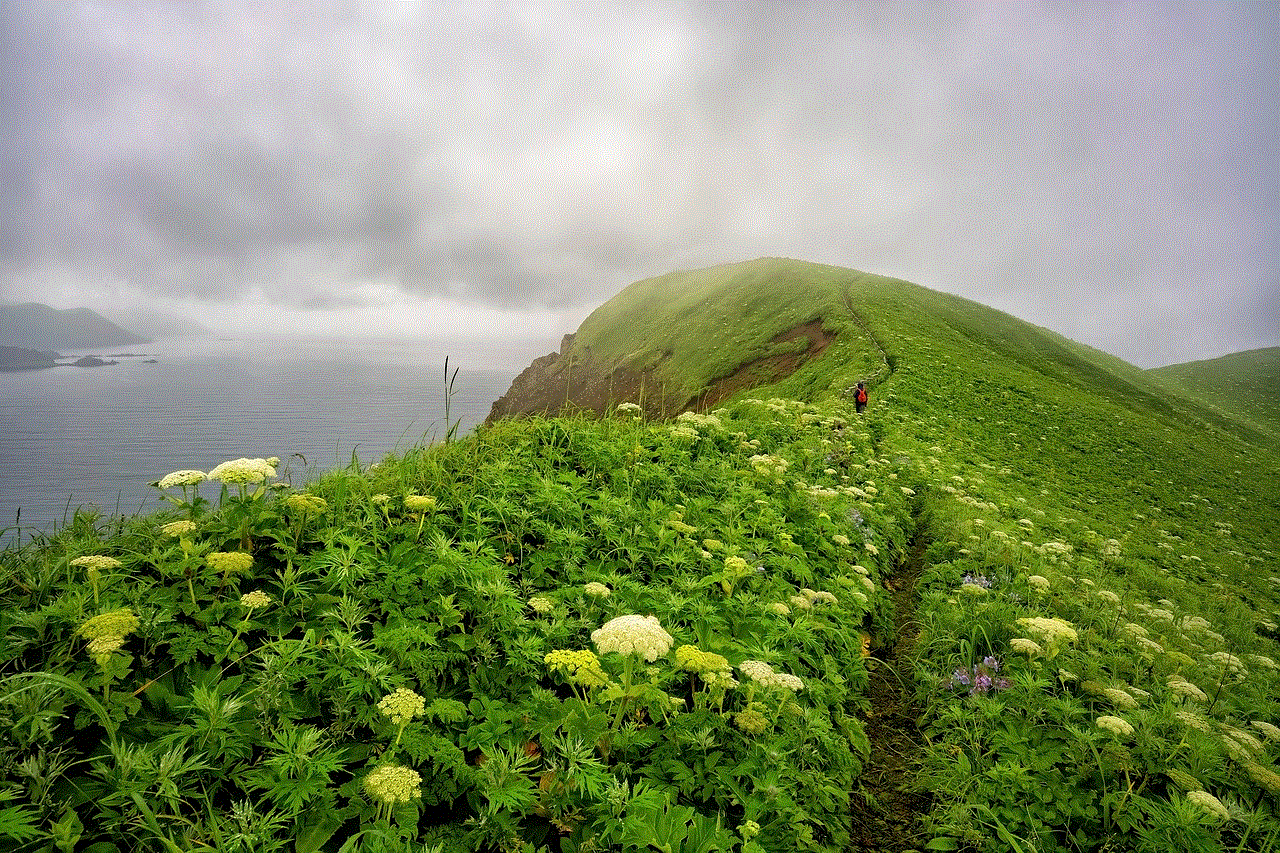does porn affect memory
Title: The Impact of Pornography on Memory: A Comprehensive Analysis
Introduction:
In recent years, the accessibility and consumption of pornography have increased exponentially due to advancements in technology. With such widespread availability, concerns have been raised about the potential effects of pornography on various aspects of human cognition, including memory. This article aims to explore the relationship between pornography consumption and memory, delving into both the scientific research and common perceptions surrounding this topic.
Paragraph 1: Understanding Pornography and Its Prevalence
Before analyzing the potential impact of pornography on memory, it is essential to understand what pornography entails and its prevalence in today’s society. Pornography refers to explicit sexual content, often in the form of videos, images, or text, created to stimulate sexual arousal. The advent of the internet has made pornography readily accessible, with various genres catering to diverse preferences. Studies suggest that a significant portion of the population engages with pornography regularly.
Paragraph 2: The Cognitive Processes Involved in Memory Formation
To comprehend the potential influence of pornography on memory, it is crucial to grasp the cognitive processes underlying memory formation. Memory formation consists of three stages: encoding, storage, and retrieval. Encoding involves transforming incoming information into a format that the brain can store. Storage refers to the retention of encoded information over time, while retrieval is the process of accessing stored memories when required.
Paragraph 3: The Neurobiology of Memory Formation
Memory formation is a complex process involving multiple brain regions and neurochemicals. The hippocampus plays a critical role in consolidating new memories, while the prefrontal cortex aids in memory retrieval. Neurotransmitters like dopamine and serotonin modulate memory processes. Understanding these neurobiological foundations is essential when investigating the impact of pornography on memory.
Paragraph 4: Pornography’s Potential Impact on Memory Encoding
Research exploring the effects of pornography on memory encoding is limited. However, some studies suggest that exposure to sexually explicit material may enhance attentional processes during encoding due to the novel and arousing nature of the content. Conversely, excessive pornography consumption might desensitize individuals, leading to difficulties in encoding non-sexual information. Further research is necessary to provide conclusive evidence in this domain.
Paragraph 5: The Role of Pornography in Memory Storage
The impact of pornography on memory storage remains a subject of debate among researchers. Some argue that excessive pornography consumption may lead to the formation of distorted, unrealistic sexual scripts, potentially influencing memory storage. However, empirical evidence supporting this claim is limited, and more research is needed to determine the extent to which pornography affects memory storage.
Paragraph 6: Pornography’s Influence on Memory Retrieval
Memory retrieval refers to the process of accessing stored information. While studies specifically investigating pornography’s effects on memory retrieval are scarce, research on the broader topic of sexual arousal and memory has been conducted. Findings indicate that high levels of sexual arousal during encoding can enhance memory retrieval for sexually explicit material. However, this enhancement might be limited to specific contextual cues associated with the sexual stimuli.
Paragraph 7: The Impact of Pornography on Cognitive Functioning
While memory is just one aspect of cognitive functioning, it is essential to consider how pornography might influence other cognitive processes. Some studies suggest that excessive pornography consumption might lead to decreased cognitive control, attentional difficulties, and impulsivity. These factors could indirectly affect memory function. However, further research is needed to establish a direct causal relationship between pornography consumption and memory impairment.
Paragraph 8: Individual Differences in Memory Effects
It is important to acknowledge that the impact of pornography on memory might vary across individuals due to several factors. These factors include age, gender, socio-cultural background, pre-existing beliefs, and personal attitudes towards sexuality. Individual differences play a crucial role in determining how pornography affects memory and cognitive processes.
Paragraph 9: Potential Benefits and Drawbacks of Pornography
While the focus of this article is on the potential negative impact of pornography on memory, it is vital to recognize that not all effects are detrimental. Some proponents argue that pornography can have positive effects by promoting sexual education, stimulating sexual desire, and serving as a form of sexual outlet. However, the potential drawbacks, such as addiction, relationship conflicts, and unrealistic expectations, cannot be ignored.
Paragraph 10: Conclusion
In conclusion, the impact of pornography on memory is a complex and multifaceted topic. Existing research provides limited evidence regarding the specific effects of pornography consumption on memory encoding, storage, and retrieval. Further studies are necessary to gain a comprehensive understanding of the potential cognitive implications of pornography. It is crucial to consider individual differences, neurobiological factors, and the broader context of pornography consumption when examining its impact on memory and cognitive functioning.
who’s the first youtuber
Title: The Evolution of youtube -reviews”>YouTube : Unraveling the First YouTube r and the Rise of Online Content Creators
Introduction:
YouTube, the world’s largest video-sharing platform, has become an integral part of our lives, transforming the way we consume and create content. It has given rise to a new generation of celebrities known as “YouTubers.” However, delving into the origins of this phenomenon and identifying the first YouTuber requires us to explore the platform’s history and its early pioneers. This article aims to shed light on the evolution of YouTube, the first YouTuber, and the subsequent growth of online content creators.



1. The Birth of YouTube and Its Early Days:
YouTube was founded by three former PayPal employees—Chad Hurley, Steve Chen, and Jawed Karim—in February 2005. The platform was initially intended as a video-dating website but quickly evolved into something much bigger. The first video ever uploaded on YouTube was titled “Me at the zoo” by Jawed Karim, marking the platform’s humble beginnings.
2. The Rise of Online Video Sharing:
With the popularity of YouTube soaring, more and more users began sharing videos on the platform. Individuals from all walks of life, ranging from amateur filmmakers to musicians and comedians, recognized YouTube’s potential as a stage for showcasing their talents. This marked the inception of online content creation as we know it today.
3. The First YouTuber’s Identity:
While the first video uploaded to YouTube was by Jawed Karim, it is important to note that he is not considered the first YouTuber. The title of the “first YouTuber” is often attributed to a user named “Brooke Brodack” (also known as Brookers), who gained fame through her comedic vlogs and skits. Brodack’s videos garnered millions of views, setting a precedent for future YouTubers.
4. The Emergence of the Vlogging Community:
As YouTube continued to grow, the vlogging (video blogging) community emerged as a significant force on the platform. Vloggers like Lonelygirl15, Ryan Higa (Nigahiga), and Charles Trippy became early pioneers, captivating audiences with their personal stories, challenges, and unique perspectives. These individuals laid the groundwork for the vlogging culture that thrives on YouTube today.
5. The Influence of Comedy and Sketch Channels:
Simultaneously, comedy and sketch channels gained prominence on YouTube. Creators such as Smosh, Fred, and Shane Dawson captivated viewers with their humorous skits, parodies, and pop culture commentaries. Their content resonated with a young audience, propelling them to YouTube stardom and paving the way for future comedic YouTubers.
6. The Transition from Traditional Media to YouTube:
YouTube’s rapid growth and accessibility attracted established personalities from traditional media, seeking to reach an online audience. Notable examples include Justin Bieber, who was discovered on YouTube by talent manager Scooter Braun, and Ellen DeGeneres, who invited popular YouTubers to her talk show, bridging the gap between online and mainstream media.
7. The Influence of Gamers and Let’s Play Channels:
The gaming community found a home on YouTube, with creators like PewDiePie, Markiplier, and Jacksepticeye gaining millions of subscribers through their Let’s Play videos and gaming commentary. Their success showcased the platform’s potential for content beyond traditional entertainment and solidified gaming as a major genre on YouTube.
8. Educational and Science-Based Channels:
YouTube also became a hub for educational content, with creators like Vsauce, CrashCourse, and MinutePhysics captivating audiences with their informative and engaging videos. This shift showcased YouTube’s ability to disseminate knowledge and provide accessible learning platforms to millions worldwide.
9. The Impact of Lifestyle and Beauty Vloggers:



Lifestyle and beauty vloggers, such as Zoella, Tanya Burr, and Michelle Phan, gained immense popularity on YouTube. Their tutorials, hauls, and everyday life content resonated with a predominantly female audience, transforming YouTube into a space for beauty enthusiasts and lifestyle enthusiasts alike.
10. The Evolution of YouTube as a Business:
As YouTube continued to revolutionize the entertainment industry, it transformed into a viable business platform for content creators. The introduction of monetization programs, brand partnerships, and merchandise sales allowed YouTubers to turn their passion into a full-time profession. This shift further incentivized individuals to embark on YouTube as a career path.
Conclusion:
The birth of YouTube and the subsequent rise of online content creators have forever changed the media landscape. While Jawed Karim holds the distinction of uploading the first video on YouTube, the title of the first YouTuber is often attributed to Brooke Brodack (Brookers). However, beyond the first YouTuber, the platform has seen an influx of diverse content creators across various genres, shaping YouTube into the thriving ecosystem it is today. From comedy sketches to educational content, vlogs to gaming videos, YouTube has democratized the world of entertainment and provided a platform for individuals to express themselves and connect with audiences worldwide.
nsfw social media platforms
NSFW Social Media Platforms: A Look into the Risqué Side of the Internet
In today’s digital age, social media platforms have become an integral part of our lives. From connecting with friends and family to sharing our thoughts, ideas, and experiences, these platforms have revolutionized the way we communicate. However, it’s not all sunshine and rainbows on the internet, as there are also social media platforms that cater to more explicit and adult content. These are known as NSFW (Not Safe for Work) social media platforms.
NSFW social media platforms are online communities where users can share and view explicit content that is not suitable for a work or public environment. These platforms provide a space for individuals to express their sexuality, explore their fantasies, and connect with like-minded people. While these platforms may be controversial and often face criticism, they also play a significant role in embracing sexual diversity and freedom of expression.
One of the most well-known NSFW social media platforms is OnlyFans. Launched in 2016, OnlyFans gained popularity as a platform where content creators can monetize their explicit content through subscriptions. While it initially started as a platform for adult performers, it has since expanded to include various content creators, including artists, chefs, fitness enthusiasts, and more. OnlyFans allows users to upload and sell photos, videos, and even offer exclusive live streams to their subscribers.
Another notable NSFW social media platform is FetLife. Catering to the BDSM and fetish community, FetLife provides a safe space for individuals to explore and discuss their kinks and fetishes. Users can create profiles, join groups, and participate in discussions about various topics related to BDSM, such as bondage, discipline, dominance, submission, and more. FetLife emphasizes consent and education, making it an invaluable resource for those interested in exploring the BDSM lifestyle.
In addition to these platforms, there are several other NSFW social media platforms that cater to specific niches and interests. For example, Reddit has numerous NSFW communities, known as subreddits, where users can share explicit content and engage in discussions related to various sexual interests. These subreddits cover a wide range of topics, from amateur pornography to specific fetishes, catering to diverse sexual preferences.
While NSFW social media platforms provide a space for sexual expression and exploration, they also face many challenges and controversies. One of the main concerns surrounding these platforms is the potential for exploitation and non-consensual sharing of explicit content. Platforms like OnlyFans have faced criticism for their lax content moderation policies, leading to instances of revenge porn and unauthorized sharing of creators’ content.
To combat these issues, some NSFW social media platforms have implemented stricter content moderation policies. For example, OnlyFans now requires creators to verify their identities and prohibits the sharing of explicit content without consent. Similarly, FetLife has a strong focus on consent and actively encourages users to report any non-consensual behavior or content.
Another aspect to consider when discussing NSFW social media platforms is the impact on mental health and self-esteem. While these platforms provide a space for sexual expression, they can also contribute to unrealistic beauty standards and body image issues. Users may feel pressured to conform to certain ideals and may experience feelings of inadequacy if they do not fit into those standards. It is essential for users to approach these platforms with a critical mindset and prioritize their mental well-being.



Moreover, the presence of NSFW social media platforms raises questions about the regulation and legality of explicit content online. Laws and regulations regarding adult content vary from country to country, making it challenging to establish consistent guidelines across platforms. Some argue that stricter regulations are necessary to protect content creators and users, while others advocate for more freedom of expression and self-regulation within the community.
In conclusion, NSFW social media platforms provide a unique space for sexual exploration, expression, and community building. While they may face criticism and controversy, these platforms play a significant role in embracing sexual diversity and freedom of expression. It is important to approach these platforms with caution, prioritize consent, and be mindful of the potential risks and challenges they pose. Additionally, ongoing discussions and efforts to improve content moderation and protect users are crucial for the future of NSFW social media platforms.
0 Comments